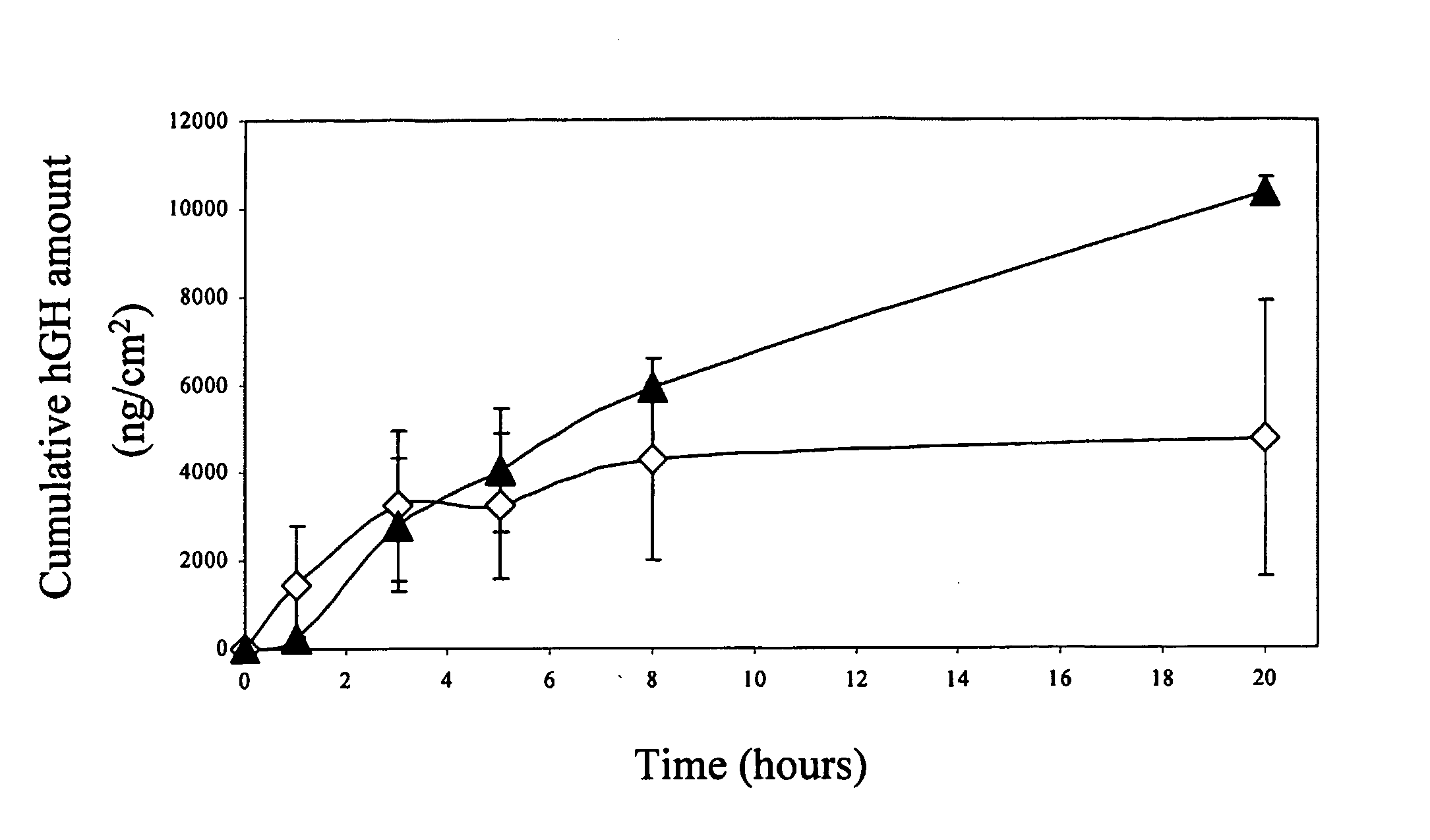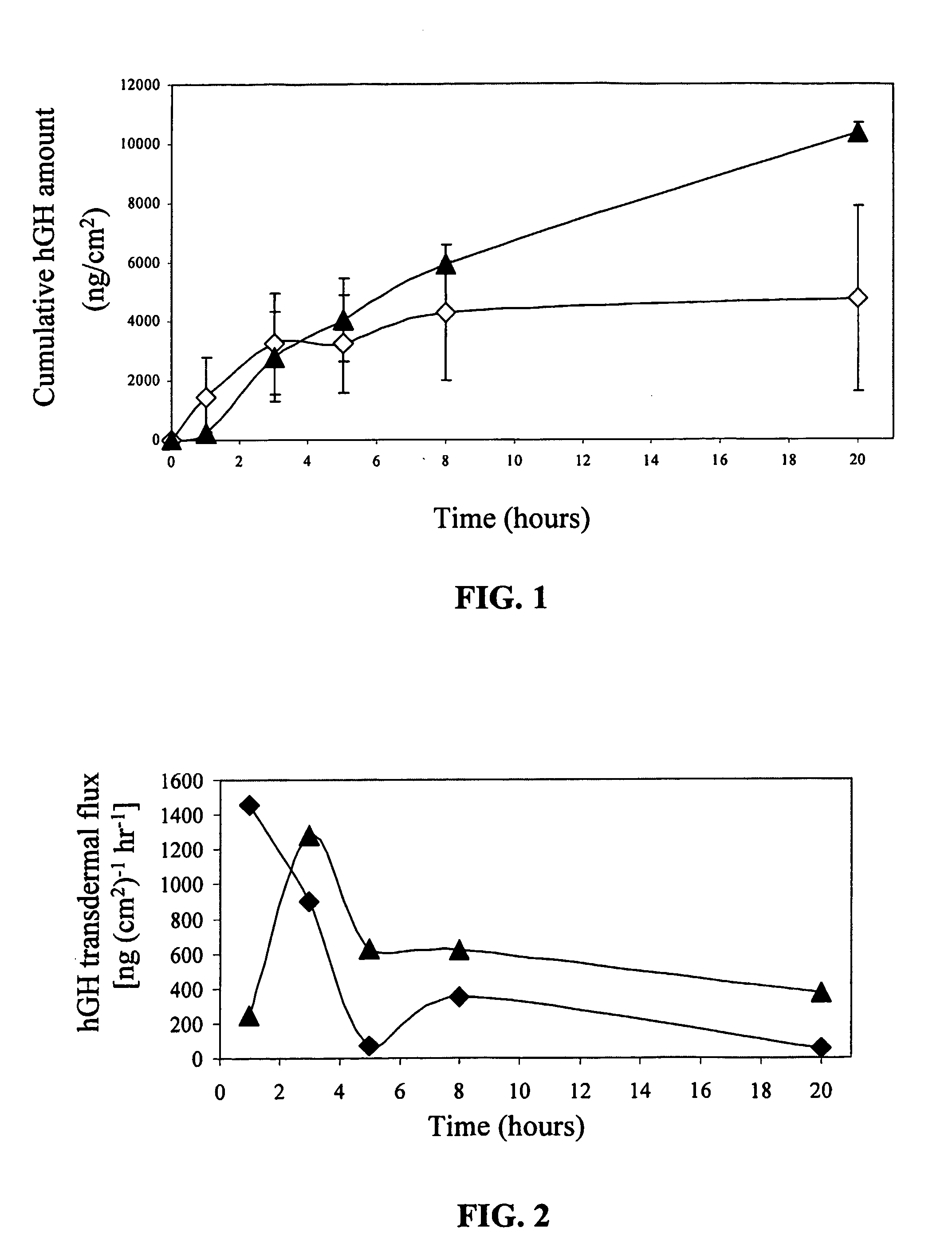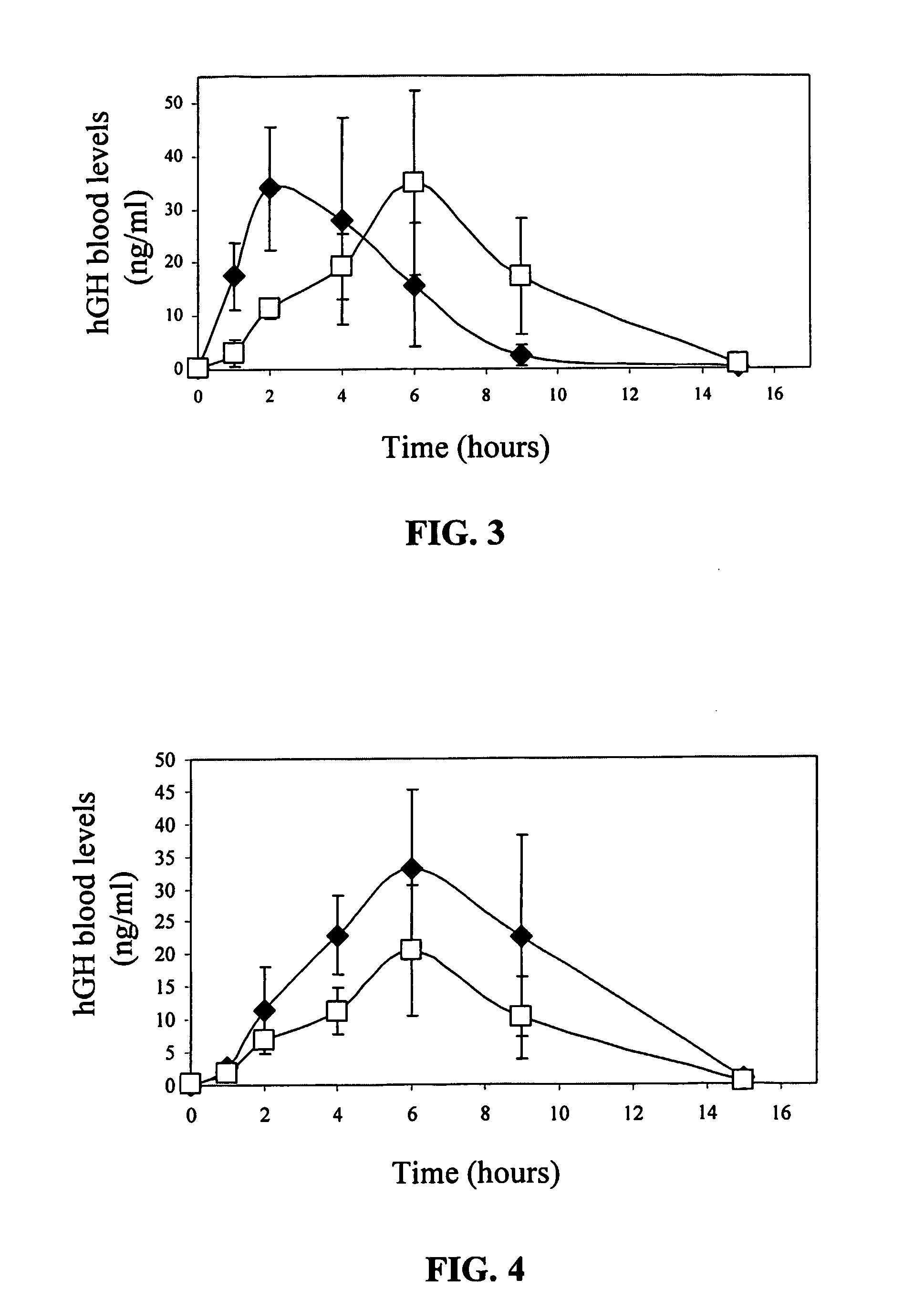Transdermal System for Sustained Delivery of Polypeptides
a polypeptide and transdermal technology, applied in the direction of peptide/protein ingredients, peptide delivery, peptide/protein delivery, etc., can solve the problems and achieve the effect of slow and sustained delivery of active agents
- Summary
- Abstract
- Description
- Claims
- Application Information
AI Technical Summary
Benefits of technology
Problems solved by technology
Method used
Image
Examples
example 1
Preparation of hGH-Collagen Film Based Patches
[0118] The collagen used herein was Vitrogen® 100 (3 mg / ml, Cohesion Technologies Inc, Palo Alto, Calif., USA). Human growth hormone was Genotropin® (5.3 mg / 16 IU, Pharmacia and Upjohn, Stockholm, Sweden). Phosphate Buffered Saline (PBS) was obtained from Biological Industries (Kibbutz Beit Haemak, Israel).
[0119] Some of the collagen patches consisted of the following: Backing liner BLF 2080 3 mil (Dow film) coated with adhesive (National-Starch Duro-Tak 387-251; Zutphen, The Netherlands), covered with perforated SIL-K silicon strip 25 mil (Dgania Silicone, Dgania, Israel), opening side of 1.4 cm2, and Release liner Rexam 78CD (Rexam Inc., Bedford Park, Ill., USA).
[0120] Collagen (Vitrogen®) solution was gently mixed with PBS×10 and NaOH 0.1M at a volume ratio of 8:1:1 for collagen:PBS×10:NaOH, respectively. The desired amount of hGH was added from a stock solution of 14 mg / ml. The collagen-hGH solution at a final volume of 300-400 μl...
example 2
Recovery of hGH from the Collagen Film Based Patches
[0121] Human GH content in collagen films was determined by extraction of the hGH to a PBS solution and by quantitative analysis using size exclusion HPLC (Phenomenex SEC, 250×4.6 mm, Phenomenex). The recovery of hGH from the collagen film is summarized in Table 1.
TABLE 1Recovery of hGH from collagen based patches.Recovery of drug (% of initialDrugBase of filmamount)hGHBacking liner (Dow film)94 ± 7hGHAdhesive (Duro-Tak)100 ± 21
Three hundred micrograms of hGH were loaded on each patch. The recovery results are the mean±SD of three experiments. As shown in Table 1, over 90% of the initial amount was extracted from the films within 5 minutes. There was no significant difference in the amount extracted when the collagen was poured directly to the adhesive or to a backing liner, although the variation within the adhesive group was higher.
[0122] For studying the release kinetics, the collagen films were suspended in PBS (2 ml) and ...
example 3
In Vitro Permeation Study of hGH through Skin
[0124] The permeability of hGH through porcine skin was measured in vitro with a Franz diffusion cell system (house made). The diffusion area was 2 cm2. Dermatomized (300-500 μm, Electric Dermatom, Padgett Instruments Ltd, Kansas, Mich., USA) porcine skin was excised from slaughtered white pigs (breeding of Landres and Large White, locally grown in Kibbutz Lahav, Israel). Transepidermal water loss measurements (TEWL, Dermalab Cortex Technology, Hadsund, Denmark) were performed and only those pieces with TEWL levels less than 15 g / m2 / h were mounted in the diffusion cells.
[0125] For the preparation of a printed patch with a required amount of hGH, the volume of each droplet was calculated according to the concentration of the hGH in the solution and accordingly the syringe's plunger displacement, which is required per one droplet printing, was adjusted, wherein the range of 0.035-0.105 mm corresponded to 0.09-0.18 μl. This range of displa...
PUM
| Property | Measurement | Unit |
|---|---|---|
| thick | aaaaa | aaaaa |
| temperature | aaaaa | aaaaa |
| distance | aaaaa | aaaaa |
Abstract
Description
Claims
Application Information
 Login to View More
Login to View More - R&D
- Intellectual Property
- Life Sciences
- Materials
- Tech Scout
- Unparalleled Data Quality
- Higher Quality Content
- 60% Fewer Hallucinations
Browse by: Latest US Patents, China's latest patents, Technical Efficacy Thesaurus, Application Domain, Technology Topic, Popular Technical Reports.
© 2025 PatSnap. All rights reserved.Legal|Privacy policy|Modern Slavery Act Transparency Statement|Sitemap|About US| Contact US: help@patsnap.com



